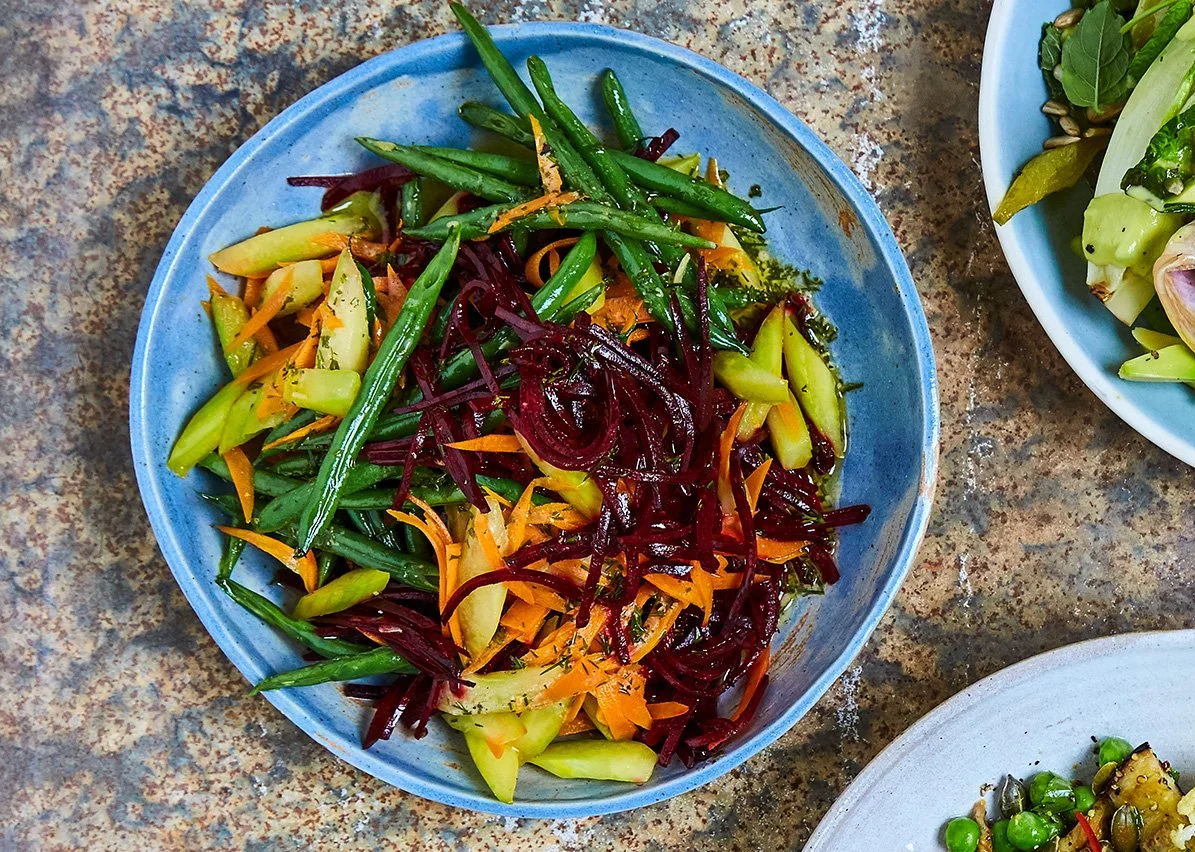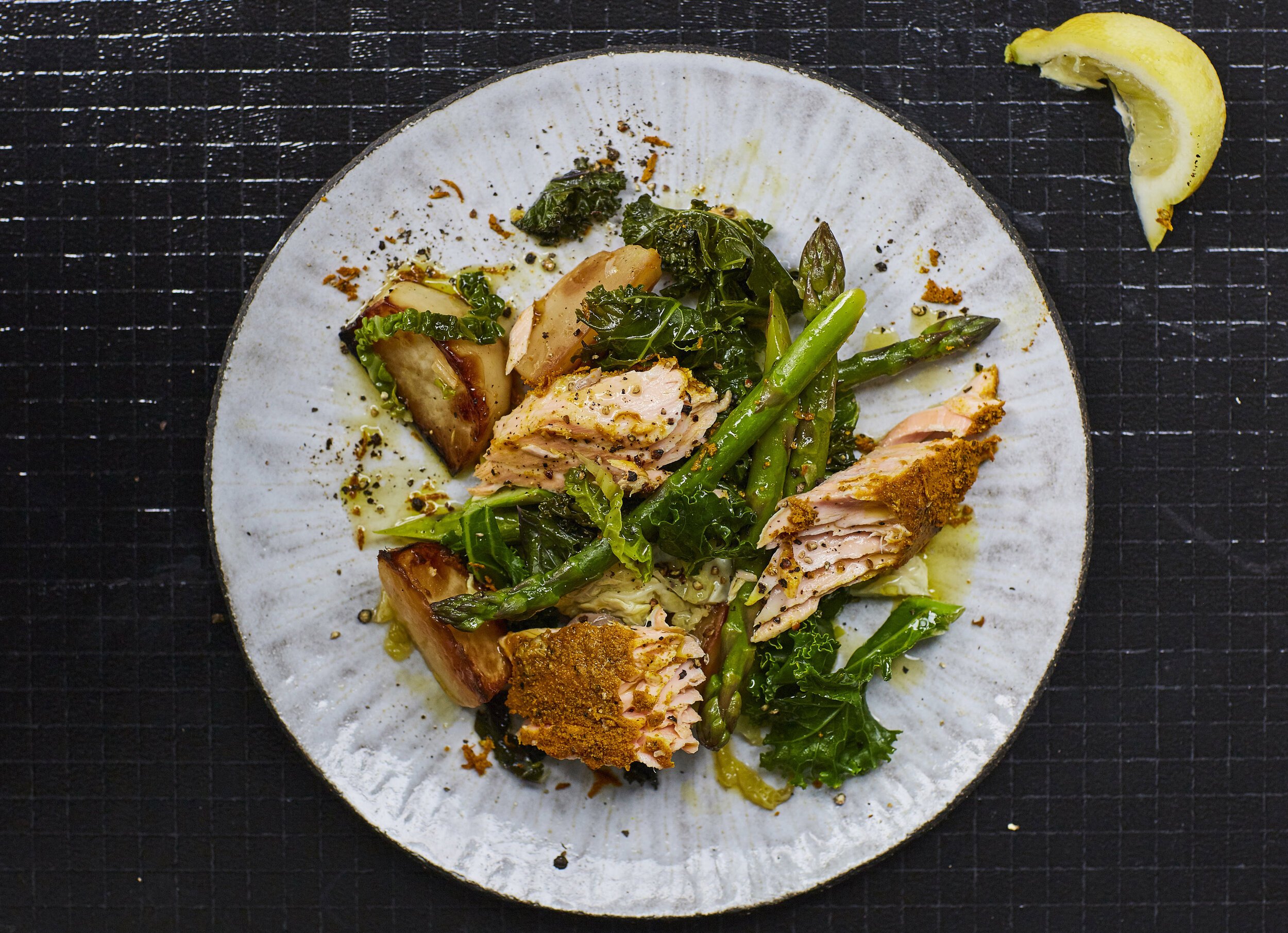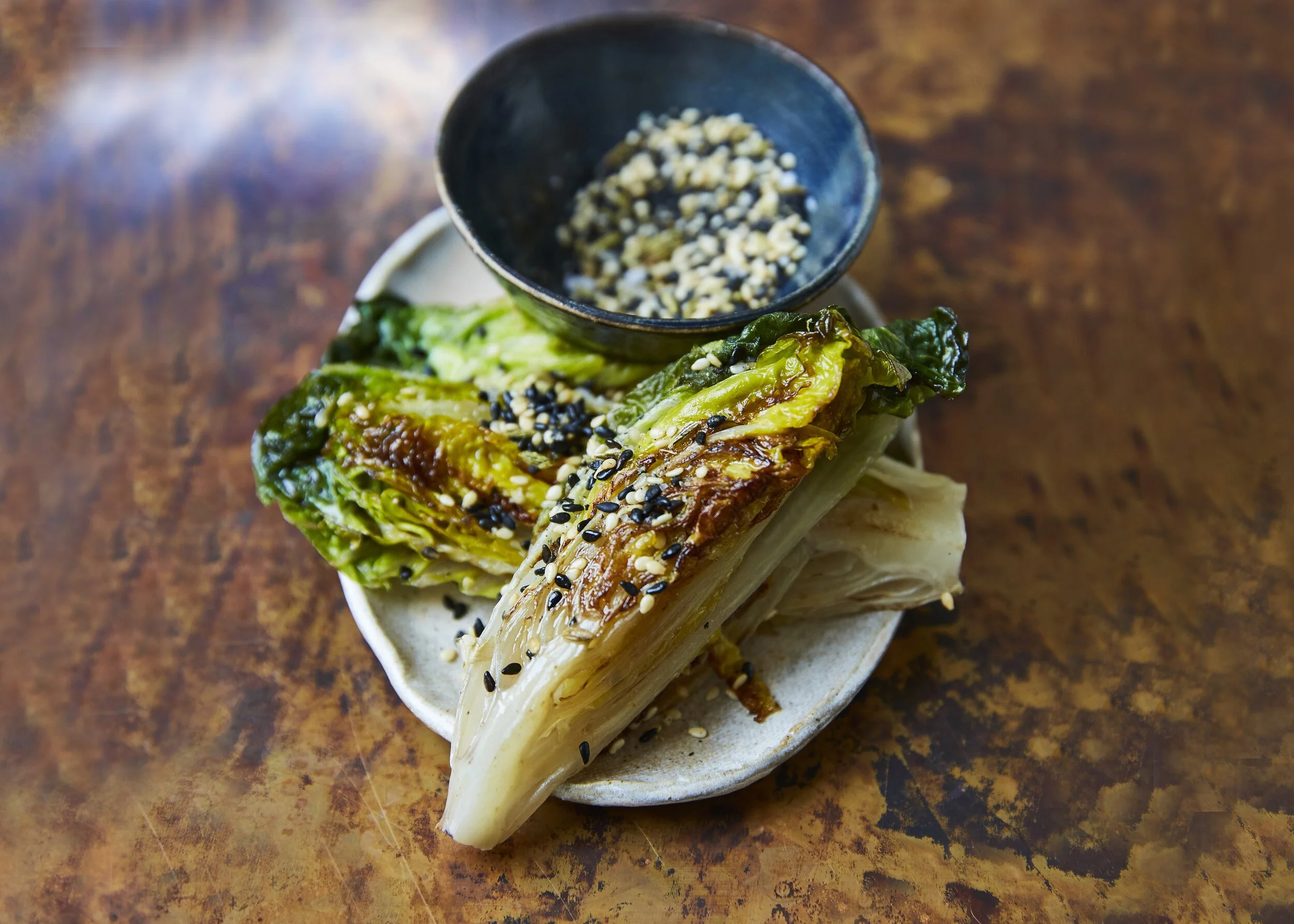WE’RE ALWAYS TOLD TO EAT OUR GREENS, BUT HOW MUCH IS TOO MUCH?
“Eat your greens!” How many times have we heard — and said — this catchy phrase? Of course, green vegetables and leafy greens (all that fibre and chlorophyll repping nature itself in its hero colour) are packed with nutrients and goodness. Typically when one thinks of healthy foods these might well be what we describe: a plate of greens, or a green juice or smoothie even, so it might come as a surprise to hear that overdoing them can be far from health-supporting. As Ayurveda teaches us, it’s all about the balance, even for the green stuff and that means looking at how we eat them and when so that they don’t have adverse effects on our digestion or upset the Doshas. Let’s take a closer look at the best time to eat them, the best way to prepare them and who they benefit most.
Green veggies tend to be leaves, shoots and immature fruits such as green capsicum and young peas and flower heads such as broccoli. When we really understand the qualities of these foods through the wisdom of Ayurveda, we can understand that they tend to have the qualities of Vata Dosha — cold, dry, light, rough and astringent, bitter and pungent in taste. All of these qualities of “air” can affect our digestion and, as time goes on, our strength and vitality. Someone needs to tell Popeye! On the other hand, greens’ cooling effect can be balancing for Pitta types or those with a Pitta aggravation, who need to chill out, and their lightening effect can be balancing for Kapha or those with Kapha aggravation who are feeling bogged down or stagnant — more on that below.
In the meantime, let’s take a look at raw leafy greens, and especially cold and raw. These kinds of salads, cool and refreshing like the breeze, have a place at lunch on a hot summer’s day, when the sun (and therefore our Agni aka digestive fire) is at its peak. In general though, Ayurveda advises against too many cold foods with Vata qualities as these are really hard on the digestion, opting instead for a diet that consists of mostly warm and cooked food. “Regular raw salads have very low TEF (thermal effect of food) meaning they have a very minimal effect on stimulating our metabolic rate,” says Ayurvedic Practitioner Dr Shijoe Mathew. “The salad might leave us bloated and heavy but still craving for something sweet and warm due to the imbalanced nutritional values in it.”
And when it comes to health-promoted diets of yesteryear, “Most of the time attempting weight loss by having a mostly salad-based diet can be unhealthy and result in nutritional deficiencies and low metabolic rate,” Dr. Mathew adds. As well as suggesting you consume any raw, leafy greens at midday, the expert recommends you “always accompany salad with a warm herbal tea or warm water to aid its digestion and to improve absorption” - ginger tea being a great choice as is “staying active post-meal at lunchtime (for example talking a walk) will ensure that the high-fibre diet is not making the tummy bloated.”
So what about our cooked veggies then? As The Mandalorian from Star Wars says, “this is the way.” Just stick to this general rule of thumb from Ayurvedic Consultant Claire Paphitis to avoid aggravating Vata when consuming your greens: “Make sure they have been cooked first (lightly steamed or stir fried is lovely — just not raw).” That’s why I like to lightly steam or sauté my salad greens as well as other veggies - cooked lettuce is yum! Check out my Braised Gem Lettuce recipe and serve a warm seasonal salad alongside a main course such as salmon or toss them into a veggie hotpot. And don’t forget to make them melt in the mouth to remove that rough, light, dry quality by cooking them down in a soup or dal (my Lettuce, Coconut and Mint Dal for example) with some gentle warming spices. “Include some lubrication in the form of a drizzle of olive oil, sesame oil or a little ghee to further alleviate some of the green vegetable's drying Vata-increasing qualities,” Claire reminds us.
If all of this is new to you and the info overload is making your Vata spin, don’t worry: as it turns out, here in the Northern Equator, it’s actually the perfect time to be eating our greens. As Geeta Vara, Ayurvedic Practitioner says, “during the Kapha season (spring), we want to opt for bitter-tasting foods, which includes plenty of leafy greens (spinach, spring greens, kale, cavolo nero, etc.) because the bitter taste and dry qualities keeps the heavy water and earth qualities of Kapha in check. You see, Kapha accumulates over the winter and starts to destabilise in our bodies and may trigger Kapha type conditions (coughs, colds, sinusitis, headaches, digestive issues, seasonal allergies etc.). So during spring, having plenty of leafy greens as part of our diet helps us to clear excess Kapha out of the body. Their bitter quality can help stimulate the digestive enzymes in the body and have a gentle cleansing effect. For this reason, they are an excellent choice to balance out the damp heaviness of Kapha during spring season and can help to cool Pitta in the summer.”
Now let’s talk about warming spices, those that offer the exact opposite of the cold qualities of Vata and Kapha. Dr Mathew reminds us, “Ginger and garlic sautéed in ghee or coconut oil can improve the thermal effect of food (e.g. the warming effect of the salad).” Whilst Dr. Geeta expands t “spiced (ginger, black pepper, cinnamon, clove, turmeric, cumin) and lightly cooked greens in ghee (clarified butter) work a treat during the spring as this is the time we would traditional want to do some digestive and body cleansing from an Ayurvedic perspective and are especially favourable if you have Kapha dominance in you constitution.” A little lime juice, with its warming sour quality, is a good addition to help digest our meals, says Claire, as is lemon juice, with Dr Mathew reminding us that “vitamin C in the lemon also helps absorb the iron in the green leaves which are otherwise quite hard to absorb.”
Last but not least, one more point to consider when planning your meals. “Leafy greens are great as part of your meals at the Kapha intervals of the day between 6 and 10 a.m. or 6 and 10 p.m. as your body wants lighter foods to digest to balance the earthier energy,” says Dr. Geeta, which was interesting for me. I tend to avoid greens in the evening meal – opting for more grounding veggies such as sweet potato that also have kapha qualities as I’m always on a mission to reduce the Vata that gets stirred up during my working days, especially now that I’m juggling more and trying to fit work in around the baby. Dr. Geeta advised me that in general it’s “fine to have greens as part of your evening meal. Keep it balanced with other cooked veggies (good old British seasonal roots) for you. Maybe in the autumn you might want to exercise a little more caution.”
So tuck into those greens now and the coming months, and then reduce as the summer sun starts to fade and we move into autumn, which in itself has Vata qualities. Cook them well, especially in the evenings, spice them up and add some healthy fats, and all the while be sure to be tucking into a “broad rainbow of colours and variety,” as Claire reminds us!
SOME OF MY FAVOURITE GREEN AND SALAD RECIPES:
BRAISED GEM LETTUCE WEDGES WITH FENNEL & SESAME GOMASHIO
LEMON, TURMERIC AND BLACK PEPPER SALAD WITH SPRING GREENS
CARAMELISED CELERY, COURGETTE AND PUMPKIN SEEDS WITH MINT, MANCHEGO AND ROCKET



